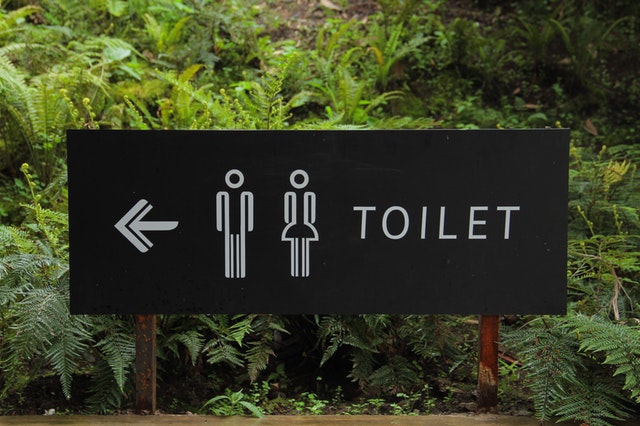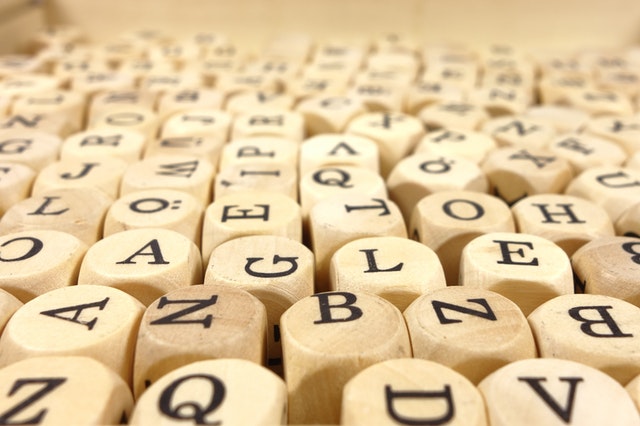Handy Little Guide on the Gender of French Nouns
Any French learner has had that "what's the gender of this word again?" moment, followed by the leafing through the dictionary. Your teacher may tell you that the only way to know the gender is by learning by heart; but I'm telling you there's a way that'll let you guess it almost always correctly.

Any French learner has had that "what's the gender of this word again?" moment, followed by leafing through the dictionary. Your teacher may tell you that the only way to know this is by learning the gender of French nouns list by heart, but I'm telling you there's a way that'll let you guess it almost always correctly.
Note that I said "almost always" since French has the audacity to slip exceptions here and there to keep things interesting for you.
So, the techniques I'm showing you in this article are not infallible as you'll need to learn the exceptions as well.
But since there are more rules than exceptions, if you follow these tips, you'll be able to guess the gender correctly around 80% of the time. Which is already pretty great, right?

Why You Need to Learn the Gender of Nouns in French
The gender of nouns is probably something that English speakers consider as an "over-the-top" French rule. I mean, a bed is a bed, it's not a he or a she.
So, what's the point of these genders, eh?
As it turns out, you cannot speak French without knowing the genders of the French nouns you're using. This is because when you create a sentence in France, you'll need to adjust many components based on the gender of your nouns.
1. Articles
When to use "la" or "le?" Is it "un" or "une?"
French articles are one of the most basic French grammar rules. And to be able to use them correctly, the first thing you need to know is the gender of your noun.
And this applies to all types of articles in French:
- definite articles: "la," "le" and "les"
- indefinite articles: "un," "une" and "des"
- partitive articles: "du," "de la" and "des"

2. Adjectives
Is it "beau voiture" or "belle voiture?"
The gender of the nouns you're using will determine the type of adjectives you use - masculine or feminine.
For many adjectives, the difference lays on adding an -e at the end for a feminine noun. And in some cases, this doesn't change the pronunciation of the adjective.
So in oral conversations, you may get by if you don't know the gender of the noun.
Example:
gâteau sucré - tarte sucrée
(sweet cake - sweet pie)
However, - and there is always however in French grammar rules - there are also many adjectives where you can't "fake it till you make it" because the masculine and feminine versions are completely different.
Example:
vieux bâtiment - vieille maison
(old building - old house)

3. Verb agreements
The so-called "accord du verbe" in French is when you adjust a verb, notably in compound tenses, to fit the gender of the subject.
The rule is pretty straightforward: if the subject is a female, you agree the verb by adding an -e at the end of the past participle.
Example:
Sarah est allée au cinema. Daniel, lui, n'est pas allé.
(Sarah went to the cinema. But Daniel didn't.)
You're also going to need to adjust the verb if there's a direct object that's a feminine noun.
Example:
J'ai acheté une robe. Je l'ai achetée pour ma mère.
(I bought a dress. I bought it for my mother)
Note that in the second phrase, there's an extra -e at the end of the past participle. This means that the verb has an agreement because "robe," the object of the sentence, is a feminine noun.
4. Pronouns
Yep, you need to know the gender of the nouns to be able to use the pronouns correctly, too.
Here's an example of possessive pronouns:
Lucas a un vélo et une moto. Son vélo est vert et sa moto est bleue.
(Lucas has a bicycle and a motorbike. His bicycle is green and his motorcycle is blue.)
As you can see, since "vélo" is a masculine noun, the possessive pronoun you use is "son." Meanwhile, "moto" is a feminine noun, so it must be "sa moto."

Guide on Recognizing the Gender of French Nouns
Now that you know how important it is to know the gender of the nouns you're using, let's get to the tips.
Some patterns allow you to recognize - even guess the gender of any noun. Provided that you don't fall in the exception traps, you'll be spot on most of the time.
1. Nouns that are Clearly Feminine or Masculine
The nouns that designate a man or a woman will have the corresponding gender. Easy peasy.
For example:
un homme (a man), un garçon (a boy), un fils (a son), un père (a father), un monsieur (a mister), etc --> clearly masculine.
Meanwhile:
Une femme (a woman), une fille (a girl/a daughter), une mère (a mother), une madame (a madam), etc --> clearly feminine.

2. Names of Countries
When it comes to the names of countries, a lot of of them are feminine, especially those that end with -e.
Examples of masculine countries:
Examples:
- Le Portugal
- Le Canada
- L'Afghanistan
Countries ending with -e but are masculine (definitive list - for now):
- Le Mozambique
- Le Mexique
- Le Cambodge
- Le Zimbabwe
- Le Zaïre
- Le Belize
A lot of African countries are masculine. This is because they often follow the name of a river which is masculine in French.
Another exception:
Some countries are always in plural (I know, shocking!). When this is the case, this means that they're masculine:
- Les États-Unis (The United States of America)
- Les Pays-Bas (The Netherlands)
And there's the case of Israel, which is a masculine name but doesn't take an article: Israël.

3. Nouns that Have Feminine and Masculine Version
Some nouns exist in both masculine and feminine version in French! Logically, this rule applies to:
- A pair of animals
Examples:
un chat - une chatte (a male cat - a female cat), un chien - une chienne (a dog - a bitch), un tigre - une tigresse (a male tiger - a female tiger), un cheval - une jument (a male horse - a female horse)
Exception:
There are animals that only exist in one gender. Example:
une souris (a mouse)
This means that even if the mouse is proven to be a male, you'll still call it "une souris."
- Human professions
Since there are male and female nurses, it's only logical if each job has a feminine and masculine version.
Examples:
un enseignant - une enseignante (a male and female teacher), un directeur - une directrice (a male and female director), un facteur - une factrice (a mail(wo)man)
Exception:
Some professions only exist in masculine form. These are usually jobs that were reserved for men for centuries, and one of the reasons why many people think French is a sexist language.
Examples:
un médecin (a doctor), un juge (a judge).
However, we do start to change this, for example, by saying: "une doctoresse" to designate a female doctor.

4. Check Out the Ending of the Noun
Now, for all the other nouns that don't fit in the three categories above, what do we do?
The simplest way is to see the ending of the said nouns.
You may have seen that a lot of nouns that end by the letter -e are feminine. Although this is correct, be careful as this doesn't apply to ALL nouns.
Example:
un verbe (a verb), le feminisme (feminism), un crime (a crime)
Instead of relying on seeing if the noun ends by -e or not, check out these comprehensive (hence, more reliable) lists:
Nouns that have these endings are usually feminine:
- -tion, -sion and -son
- -ure
- -ude, -ade
- -ée (except for "un musée" - a museum)
- -té
- -ière
- -euse
- -ance, -ence
- -consonant + -ie
- nouns that end with double consonants + -e: -tte, -lle, -sse,
Nouns that have these endings are usually masculine:
- -age
- -ment
- -il, -ail, -eil, -euil
- -é
- -eau, -eu, -eur
- -er
- -oir
- -isme
- -ing
- -ard
- -am, -um, -em
- -it, -est
- -an, -and, -ant, -ent, -in, -int, -om, -ond, -ont
- -ème, -ège

Build an Instinct on French Noun Genders
Whoa, whoa! Hold on a second.
Didn't I say that you can rely on the techniques above to guess the gender of that particular noun? I did.
But the thing is, the lists above are really to help you get started. Once you progress in French, you'll need more and more vocabularies to string longer and longer phrases.
Some nouns will be completely new and foreign, and some won't fit the lists above. This is especially true for words that French adopt from other languages (and there are more and more each year).
So, I really recommend you to be able to do more than merely guessing.
You'll need to build some sort of "instinct" that when you wish to use a noun, your spidey sense tingles and lets you know the gender of said noun confidently.
How?
1. Learn Nouns with Their Genders
When you hear or learn a noun, learn them with their genders right away.
Let's say you're reading a book (which is an excellent way of picking up new vocabularies), and seeing many new words.
Learn each new word directly with their gender. Instead of saying "voiture means car," say/write:
Une voiture means a car

2. Learn Nouns with Adjectives
This is my favorite way of learning the genders. Whenever I find a new noun, not only do I learn it with their gender, but I also give an adjective to it right away.
And since the adjective HAS to follow the gender, the noun I keep in my head is already with a gender.
For example:
Instead of just learning "une voiture is a car," I learn "une belle voiture" to say a beautiful car.
un mariage heureux (a happy marriage), un parapluie noir (a black umbrella)
3. Create Associations in Your Head
Some people find this to work really well. The concept of learning by association is that every time you learn a new noun, you classify it in your brain in a special "association drawer."
For example:
When you learn a feminine noun, you associate it directly in your head with an image of a blooming rose, which is a symbol of femininity for you. And when learning a masculine noun, you associate it with a racing car.
What you choose as the associated images will be up to you. I suggest you pick something that strongly symbolizes femininity and masculinity for you.
The objective is to be able to retrieve the gender of the nouns from their respective "drawer" when needed.

4. The Rule of Resemblance
If you know the gender of one noun, it's safe to say you'll know the gender of another noun that looks like it.
For example:
"Fille" (girl/daughter) is a feminine word. What about "ville" (city) that ends with –ille like fille? Yep, it's a feminine noun.
This way, you don't have to memorize by heart the whole list of French nouns. You don't even have to memorize the lists above.
Just use the rule of resemblance, and you'll be okay.
Be careful, however, since there are some exceptions here, too.
Example:
une casquette (a cap) is feminine, but un squelette (a skeleton) is maculine.
5. Use Them Often
I feel like I've said this a million times. The best way of learning French is to use it as often as possible.
The same thing applies to learning the genders. The more you use them in context (and not in repetition mode), the more they stick in your head.

Let's Recap
Don't waste your time memorizing the gender of each noun.
a. It doesn't bring you anywhere near your goal, and b. It's an impossible mission (without Tom Cruise).
Instead, familiarize yourself with the patterns of the nouns. When they look alike, they usually have the same gender.
When you're progressing in your learning, and also since exceptions abound, ditch the helping lists and try to build an "instinct."
If you follow the five steps above, soon enough you'll be able to "tell" whether it's a feminine or a masculine noun. When you've reached this stage, French noun genders won't have a secret to you anymore.
Finally, the most important thing is to travel to places to practise what you learn in this guide.